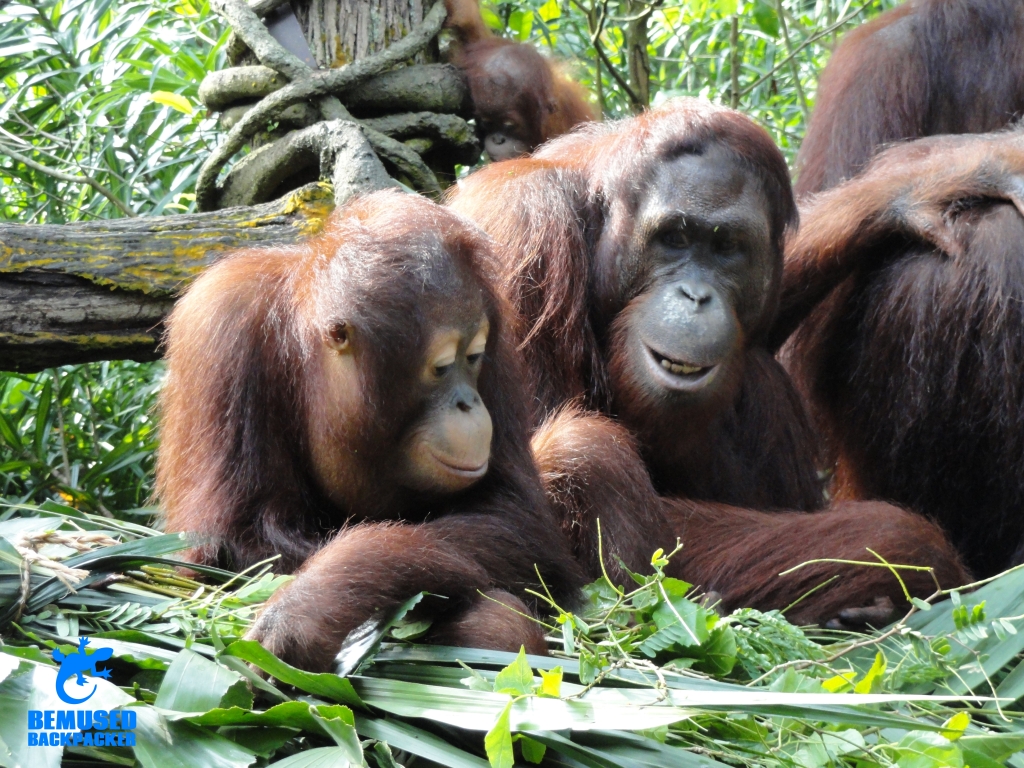
Most travellers are animal lovers, and interacting with or seeing wildlife is often right at the top of many travellers bucket list experiences. There is nothing wrong with that in and of itself and in many cases can have a hugely positive impact on conservation efforts, but as we continue to increase our understanding of responsible and ethical practices and wildlife conservation, it is more essential than ever before that we make sure that the experiences travellers engage in are responsible, sustainable and ethical.
Wildlife tourism is big business in the gap year industry and has been for many years. Over the last few decades the industry has seen a boom in experiences and facilities that offer travellers the chance to see or get up close and personal with a variety of animals, whether that be the more traditional zoos or aquariums, touts selling pictures with small animals in crowded tourist spots, animal rides or treks or even the increasingly common animal sanctuaries, rehabilitation centres and the subsequent voluntourism opportunities.
It is really important to mention that there are many wildlife attractions, sanctuaries and rehabilitation centres out there rhat are getting wildlife tourism absolutely right, and support the conservation, care and wellbeing of the animals and by extension their habitats too, by ensuring tourism has a positive and sustainable impact.
Unfortunately this is not always the case. The truth is that the wildlife tourism industry – and the tourists that use it – sometimes do a lot more harm than good, often without the tourists knowledge. More often than not the industry puts profits and the tourist experiencce over the needs of the wildlife and can cause considerable harm and destruction not only to the animals themselves but also to their habitats and wider conservation efforts.
That is why it is essential that all travellers are educated on the issues around wildlife tourism and make the right choices to support organisations that make animal welfare and conservation, and not profit, their primary concern.

Avoiding Bad Practices.
The key to being a responsible traveller and ensuring tourism is a positive force for good in the wildlife tourism industry is to be as aware as possible of the variety of issues involved in animal and wildlife tourism, and then make positive, informed decisions to avoid and challendge those practices and industries that harm and exploit animals and their habitats.
It is important to remember that large parts of this harmful and exploitative side to wildlife tourism only exist because there is profit in it, and each and every traveller has the power to make that change by ensuring they do not support it.
Tours And Safaris.

Wildlife tours and safaris are perhaps one of the single most popular travel bucket list items there is. Every traaveller dreams of seeing one of the big five on safari or seeing orangutans or gorillas ‘in their natural habitat’, a phrase which I absolutely hate.
The good news is that when done right these can be one of the most positive and ethical wildlife experiences out there, giving local communities a financial incentive to protect wildlife and their habitats, local guides significant employment and an incentive to care about and protect the animals they are showing to travellers and also abiding by international standards on animal welfare, including keeping a safe distance and not intruding on the animals territory.
Unfortunately this is not always the case and there are many examples out there of safaris and tours using irresponsible practices and putting profit and tourists desires for a good selfie above animal welfare. There are safaris that pack far too many vehicles and tourists into one excursion, chasing and hounding animals when they are spotted all in the name of a good photo opportunity. There are safaris that cause significant disruption to the animals natural envioronment, driving them away from feeding or mating grounds and causing untold psychological damage. These tours – and the tourists supporting them – can cause significant disruption and damage to the habitats, not to mention the harm and abuse toward the animals themselves. Research is essential to find out just how much any given tour company or safari cares about conservation and animal welfare before you utilise their services.
Read more:
Responsible Wild Bear Watching In Slovakia.
Responsible Orang Utan Spotting In Semenggoh Wildlife Centre.
The Good And The Bad Of Elephant Tourism In Sri Lanka.
Animal Rides.

Animal rides have been a popular part of the animal tourism industry for as long as it has been around, and in some cases has even been sold as a cultural experience, with tourists loving their photos of riding a camel into the Sahara Desert or riding an elephant into the jungles of Chiang Mai in Thailand.
These activities often play on a travellers love for animals and their wish to see them up close, often greenwashing their practices so that travellers don’t see the harm they are causing, but the worst parts of the industry exploit animals mercilessly simply for profit, forcing animals to carry unsuitable loads, work in inhumane conditions and even endure physical abuse to make them compliant with their workloads.
Fortunately in the twenty years I have been travelling, and especially in the eight years since I first wrote this post on elephant trekking in Thailand, there has been a sea change in travellers awareness and attitudes to bad practices in this part of the industry, with elephant trekking in particular almost universally seen as bad now and a concerted effort by travellers has seen this practice almost universally condemned, although it does still happen.
Unfortunately though the issue is not as black and white as some may make out. It really isn’t just a case of ending all animal rides completely and forever. There are absolutely times, such as elephant trekking with the use of the Howdah, where it is undoubtedly wrong, but there are a number of working animals such as camels and horses, where riding actually saves them from other more exploitative industries as beasts of burden and the income from tourism is used to look after and care for them. Again, it is a case of the tourism industry providing a positive alternative income that gives an incentive to care for animals. Many animal welfare charities even state that as long as the animals five freedoms are being maintained and they are being cared for, the practice can be responsible too. This is far from a clear cut issue, but it is essential that travellers do their research, understand what the needs and the welfare of the animals are and ensure that operators are providing them, and finally do not support any operator that does not put the care and welfare of the animals first.
Read more:
Are Camel Safari’s Responsible Or Ethical?
The Elephant In The Room: Why You Shouldn’t Go On An Elephant Trek In Thailand.
Why I Walked Across Mount Bromo’s Sea Of Sand.
Zoos, Aquariums And Sanctuaries.

Zoos, aquariums and marine parks are amongst the most common tourist attractions in the world and are often maligned in the simplistic black and white argument that no animal should ever be caged and they are therefore unethical.
This is an understandable base response but again, is too simplistic to be the answer.
The truth is many zoos and aqauriums do a fantastic job at maintaining excellent animal welfare standards that conform to international regulations and the high standards set by WAZA, the World Association of Zoos and Aquariums, contributing to conservation efforts internationally monitored breeding programmes and providing education to the general public. Quite frankly without the funding from this traditional side of the wildlife tourism industry there would be no conservation efforts worldwide and many species would now be extinct.
That isn’t to say however that all zoos and aquariums are good. There are also many zoos, aquariums and marine parks out there that in no way conform to international standards nor care for the animals welfare and should be shut down with extreme prejudice. Thanks in part to a lack of uniformity in the way different countries regulate and run them, in many zoos and animal attractions around the world it is not uncommon to see small and inappropriate cages or enclosures, substandard conditions, ill treatment, poor care and even cruel training practices in order to get the animals to perform. It is absolutely abbhorrent, but it is far too simplistic to tar all facilities with the same brush.
The same is true for animal sanctuaries too. The same simplistic argument that castigates all zoos as bad often states that all sanctuaries are good. Even the term sanctuary itself implies safety, welfare and care. In many cases this is absolutely true, there are many facilities around the world that use the money from tourism to buy land for animals and care for their welfare, often even rescuing animals from substandard zoos or private collections. Again, unfortunately this isn’t always the case, with many so called sanctuaries simply using the term as a way to greenwash their bad, exploitative facility and make a quick buck. There are many that are nothing more than baby farms, that line up a constant stream of cute lion cubs for tourists to take photos with, but hiding the fact that this constant stream of cubs mean the older lions are sold on for roadside zoos or more often canned hunting. There are others that promise they are rescuing orangutans or elephants from a life of torture, and then have them perform for tourists pleasure.
It is not always easy to tell the good from the bad, and it is difficult to do the right research beforehand and know what type of facility you are visiting. Unfortunately there are always going to be times you don’t get it right either, some of the greenwashing involved can be very convincing, but it is essential that you try to make the right choice and only support and visit zoos, sanctuaries and animal attractions with demonstrable efforts towrad suitable and correct animal care and conservation.
Read more:
The Horrible Truth About Animal Sanctuaries.
Responsible Orang Utan Spotting In Semenggoh Wildlife Centre.
Visiting The Dragos Voda Bison Reserve In Romania.
Why Zoos Are An Important Part Of Responsible Wildlife Tourism.
Exotic Menus.

Experimenting with new foods and delving into local cuisines is on of the undeniable pleasures of round the world travel, and the vast majority of the time this is absolutely fine. However there are times when you will come across certain things on the menu that may look unique and tantalising, but have a darker story behind them than you may realise at first. Various exotic meats and dishes such as shark fin or birds nest soup for example are often supplied by the illegal wildlife trade, sometimes involve eating endangered or at risk species and help to undermine conservation efforts, and that is nothing compared to the brutality of how some of these dishes ingredients are obtained.
This has absolutely nothing to do with veganism or vegetarianism, there is no judgement on eating meat that is legal and ethically obtained. I’m talking here about practices that specifically go against international law or specific conservation efforts.
Awareness is key here, and I understand that there may be times when you are trying out something new and simply don’t know. No one can be blamed for that. But what travellers can be blamed for is knowing about the negative practices involved in some delicacies and don’t support those practices by indulging in them.
Read more:
An Unconscionable Coffee Delicacy. Should Travellers Be Drinking Kopi Luwak?
Should Travellers Eat Shark Fin Soup?
Photo Opportunities.

Want a picture posing with a docile tiger or cuddling a baby monkey? Want a selfie with a sloth? You may just be contributing to the abuse of the animals involved. There are issues with vendors offering pictures with animals in heavily touristed areas, as well as travellers themselves expecting the opportunity in certain rehabilitation centres or sanctuaries where the animals should be getting less human interaction, not more. There are obviously some incidences where getting a photograph with an animal will be absolutely fine, but it is essential that the general public is educated on the issues involved so that they can make informed and ethical choices.
Read more:
A Photo For Facebook? You’ve Just ‘Liked’ Animal Abuse.
Is This The End Of Thailand’s Tiger Temple?
It IS Finally The End Of The Tiger Temple: But What Happens To The Tigers Now?
Thailand’s Cruel Tiger Temple Finally Shut Down.
Thailand’s Tiger Temple Is Reopening.
Why Are People Still Visiting Thailand’s Tiger Temple?
What You Can Do.
If you plan on visiting any animal attraction or doing any activity that involves animals, it is essential that you do as much research as you can beforehand. If you research before you leave, then use the tools, advice and information from websites such as the World Animal Protection to research the types of issues you may come across in the countries you are visiting, any potential things to look out for and avoid.
If you visit a zoo or aquarium, make sure it adheres to the World Association of Zoos and Aquarium’s code of ethics.
Ensure that any facility with work animals ensures that the animals have the five freedoms, namely:
- Freedom from hunger and thirst.
- Freedom from discomfort.
- Freedom from pain, injury or disease.
- Freedom to express normal behavior.
- Freedom from fear and distress.
Ensure that any tour or safari respects the animals, does not make any promise of actually seeing or interacting with them and keeps their distance. Give animals their space and ask yourself if you are intruding. If the answer is yes, back away.
Look for facilities that enforce strict rules to protect animals, such as being quiet and not getting too close, and make no promises of any sightings.
If you do witness any type of animal cruelty or bad practice, then make note of everything you see, report it to the authorities or local animal welfare association if appropriate and certainly do not support it with your business.
None of this is easy, it is very difficult in fact and often means those bucket list items you have alwaays wanted may need to be questioned or dropped, but if backpackers, independent travellers and tourists alike all choose to shun any business or attraction that contributes to the poor care or abuse of animals, and instead choose to support those attractions which help, protect and conserve animals, then we can all make a real difference.
Related Articles.
5 Wildlife Activities You Need To Remove From Your Bucket List Right Now.
How To Volunteer With Wildlife On Your Gap Year.
How Travellers Can Make A Difference On World Elephant Day.
Responsible Tourism: Rhino Conservations Secret Weapon?
Top 10 Ethical Wildlife Experiences For Your Gap Year Bucket List.
Why Tourism Is Essential For Improving Animal Care In Wildlife Travel.
Wildlife Tourism On Your Gap Year, The RIGHT Way.
Wildlife Tourism Without Wildlife Harm. Is It Possible?
Responsible Tourism Partners.

Bemused Backpacker is proud to partner with Global Spirit, the worlds only company to specialise in providing unique, expert animal welfare assessments and recommendation services for all wildlife travel and tourism businesses, and are the worlds most experienced and trusted source for animal welfare audits.
Wildlife Tourism Audit.





